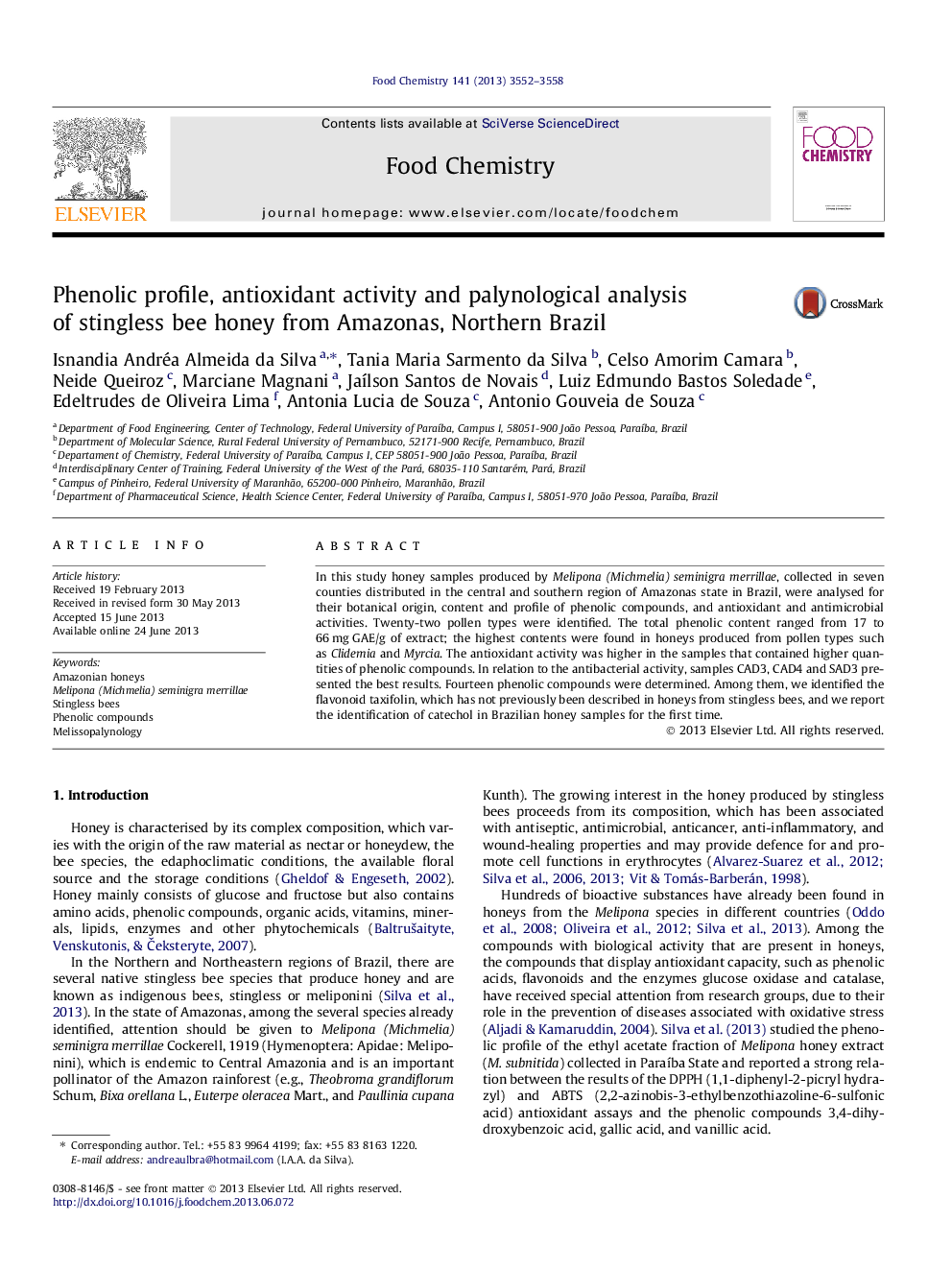| Article ID | Journal | Published Year | Pages | File Type |
|---|---|---|---|---|
| 10539817 | Food Chemistry | 2013 | 7 Pages |
Abstract
In this study honey samples produced by Melipona (Michmelia) seminigra merrillae, collected in seven counties distributed in the central and southern region of Amazonas state in Brazil, were analysed for their botanical origin, content and profile of phenolic compounds, and antioxidant and antimicrobial activities. Twenty-two pollen types were identified. The total phenolic content ranged from 17 to 66 mg GAE/g of extract; the highest contents were found in honeys produced from pollen types such as Clidemia and Myrcia. The antioxidant activity was higher in the samples that contained higher quantities of phenolic compounds. In relation to the antibacterial activity, samples CAD3, CAD4 and SAD3 presented the best results. Fourteen phenolic compounds were determined. Among them, we identified the flavonoid taxifolin, which has not previously been described in honeys from stingless bees, and we report the identification of catechol in Brazilian honey samples for the first time.
Related Topics
Physical Sciences and Engineering
Chemistry
Analytical Chemistry
Authors
Isnandia Andréa Almeida da Silva, Tania Maria Sarmento da Silva, Celso Amorim Camara, Neide Queiroz, Marciane Magnani, JaÃlson Santos de Novais, Luiz Edmundo Bastos Soledade, Edeltrudes de Oliveira Lima, Antonia Lucia de Souza,
